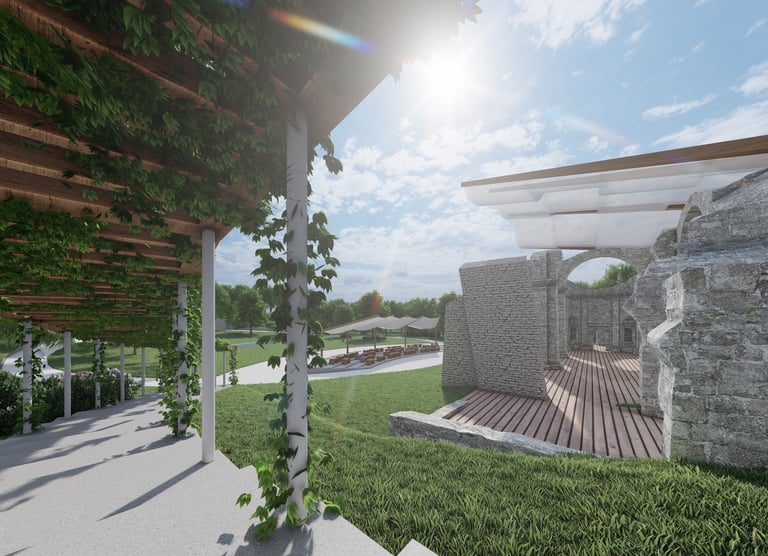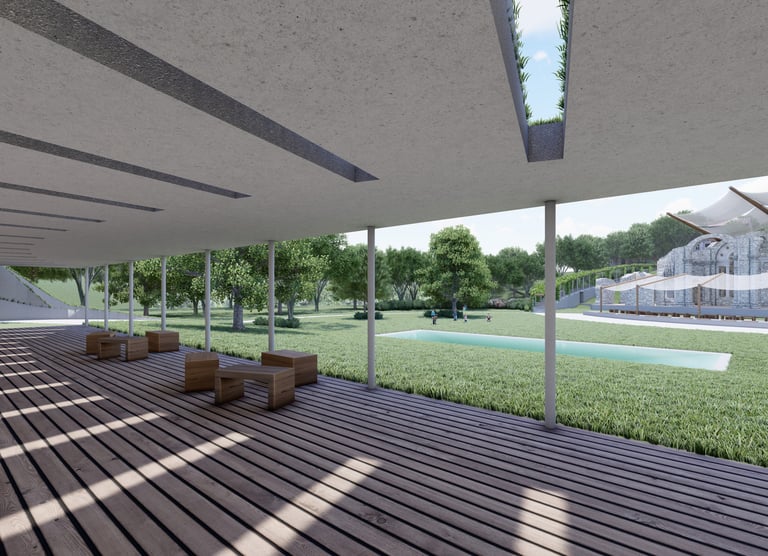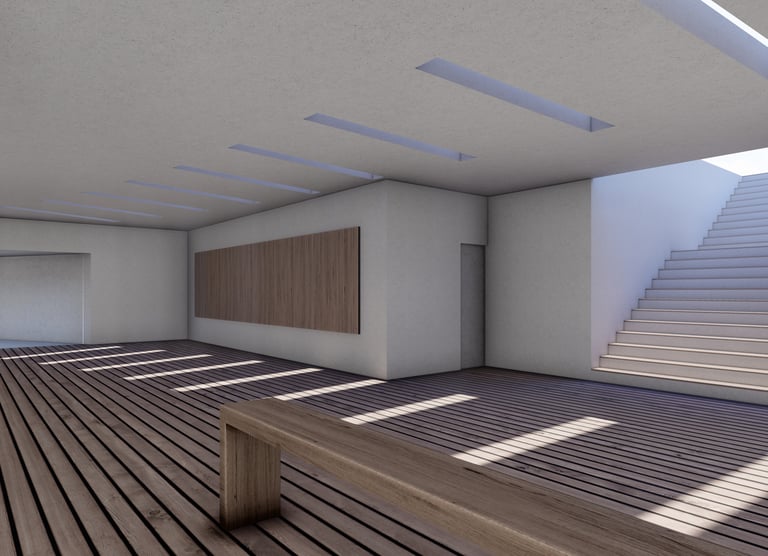REUSE THE NYMPHAEYM
International Architecture Competition
Genazzano (Roma)
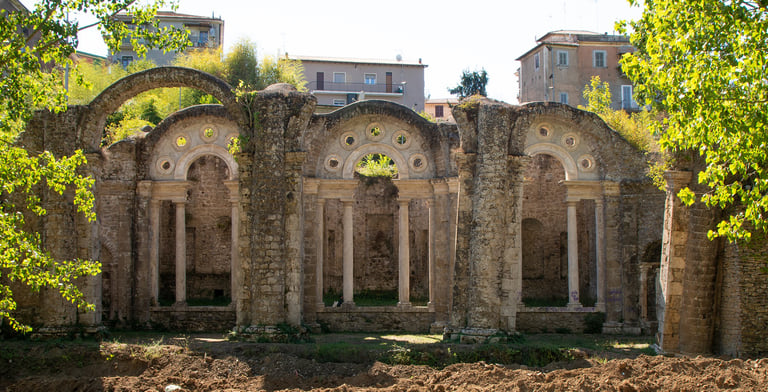

Hidden in the countryside near Rome, just outside the village of Genazzano, stands Bramante’s Nymphaeum, Renaissance pavilion designed by Donato Bramante and built in the early 15th century by the Colonna family.
Once the centerpiece of a grand garden with lakes and a river, the structure was abandoned soon after completion and has remained in ruins ever since. Reuse Italy is now launching international architecture competition, to reimagine the site as a theater and public park.
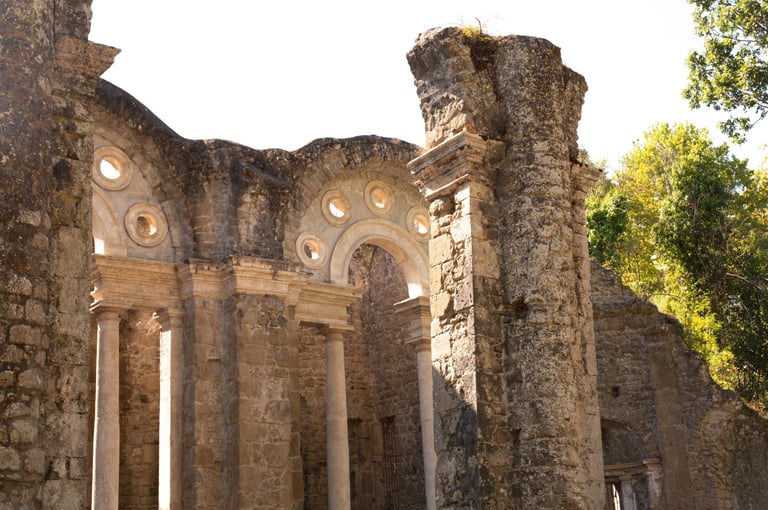

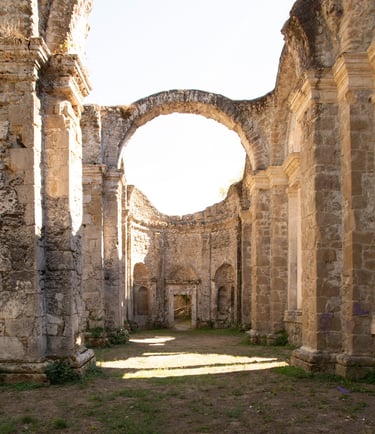

A grand staircase covered with pergolas and grape vines links the entrance hall to the garden
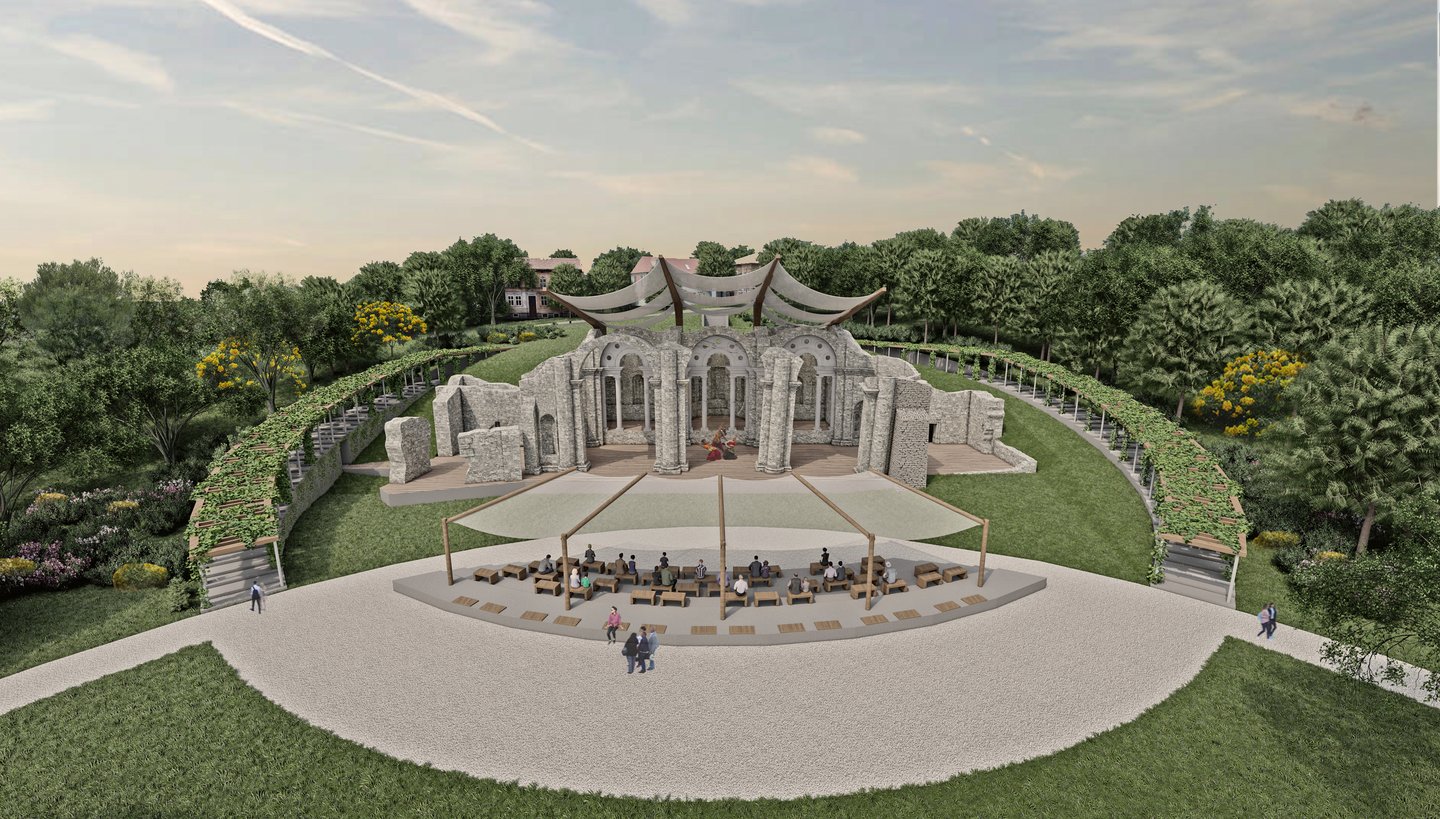

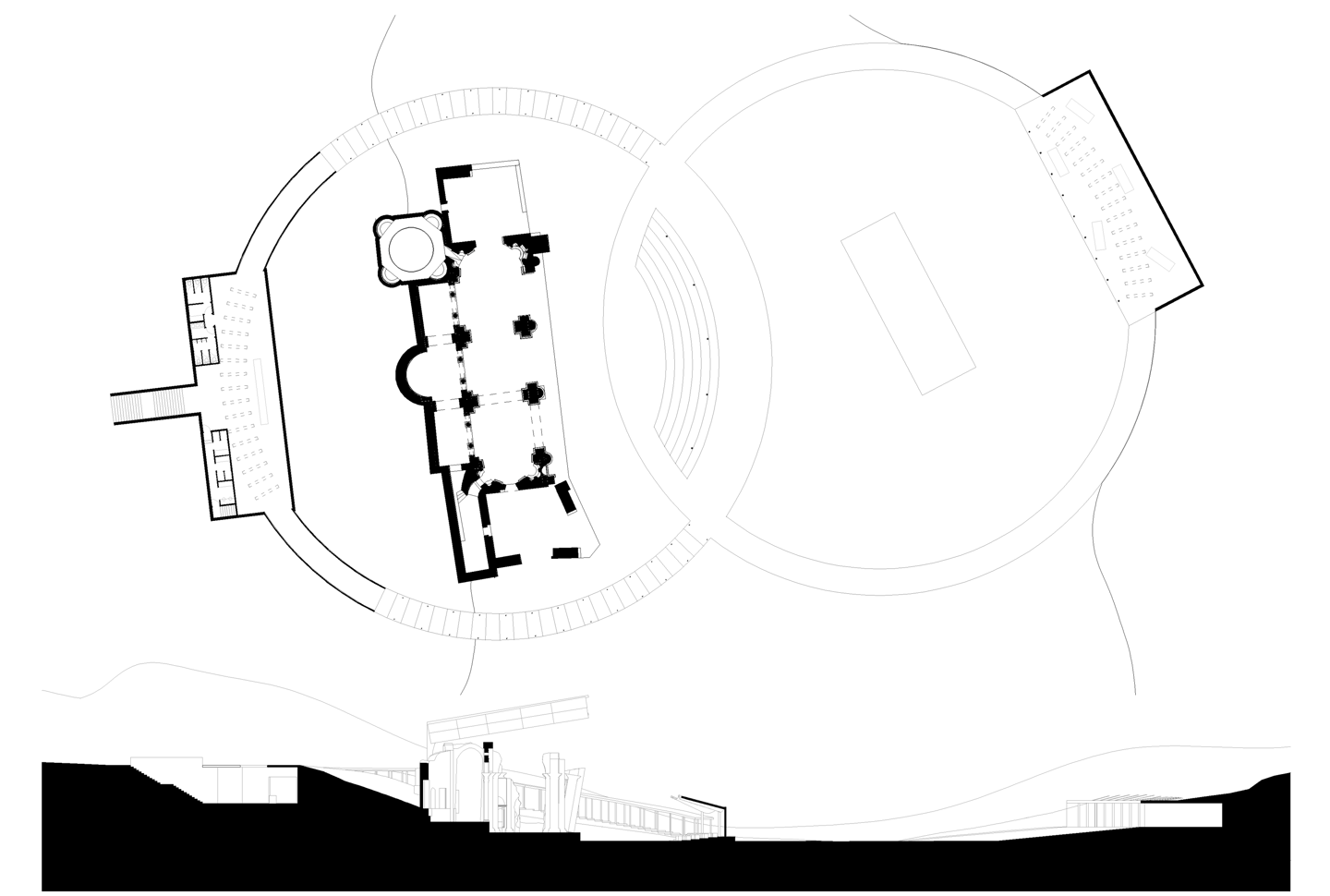

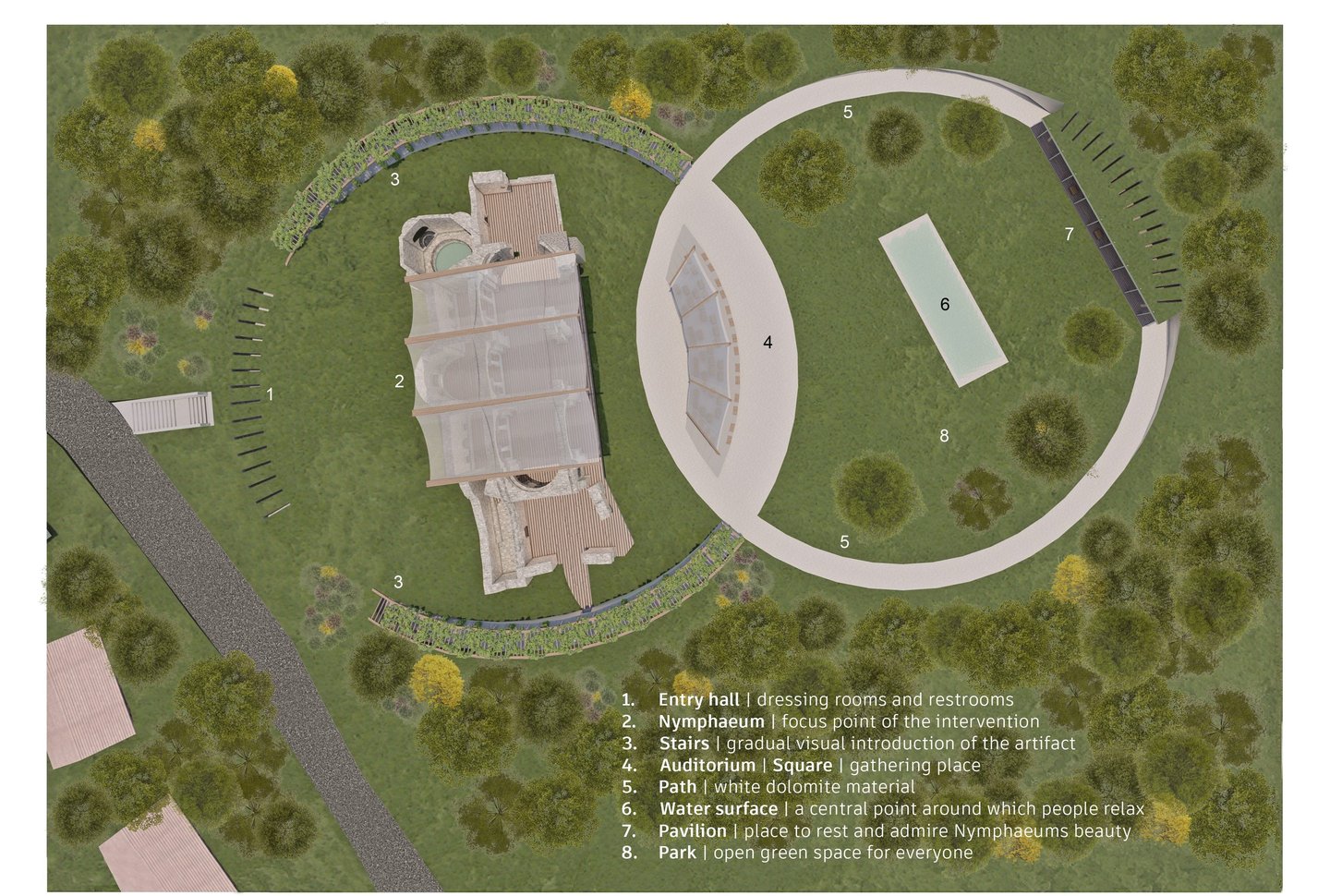

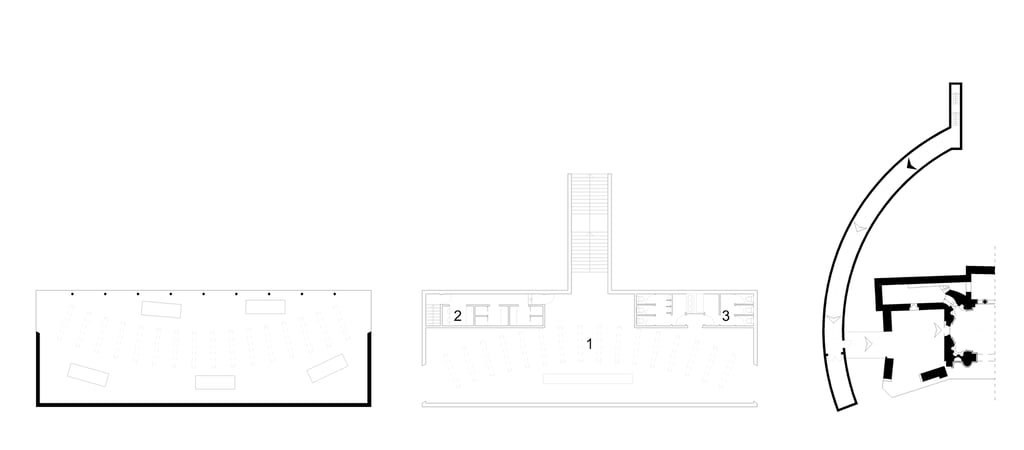

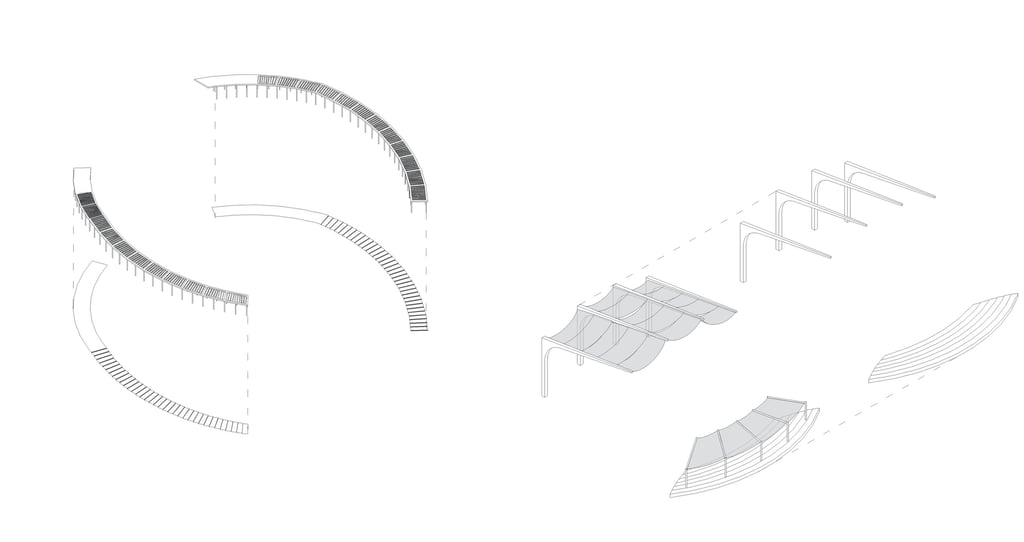

Flexible awning for protection from both sun and light rain, referencing the ancient Roman Velarium system
Secluded pavilion with a scenic view of the Nymphaeum, providing a tranquil spot for rest and relaxation
1. Welcoming entrance hall
2. Private dressing rooms for artists
3. Restrooms
Subterranean walkway allowing performers to reach the stage
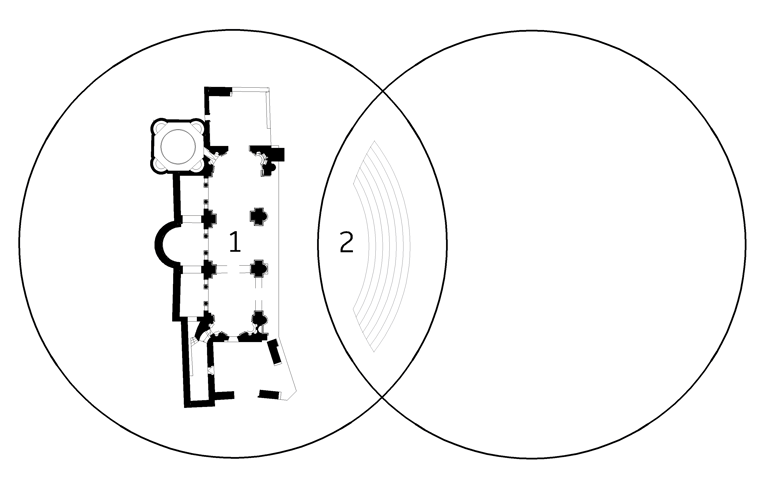

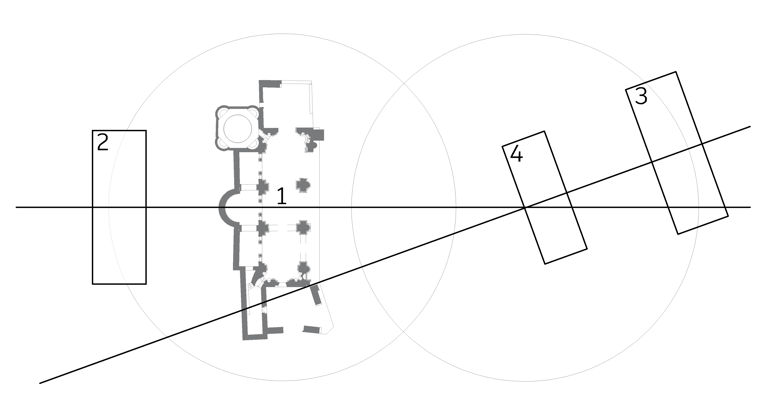

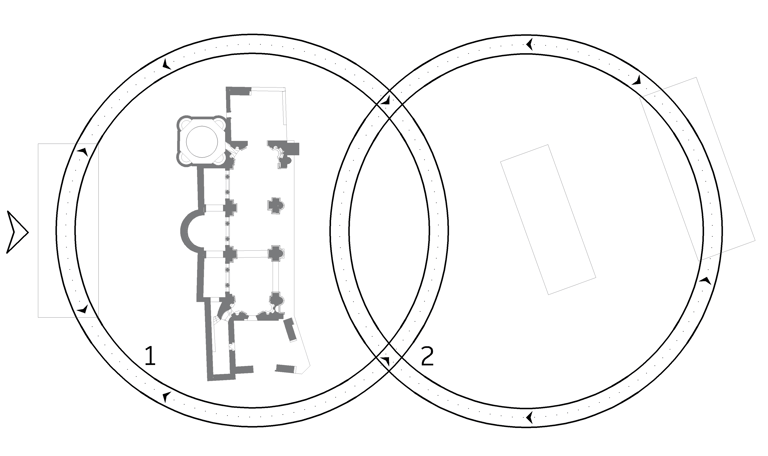

CIRCLE
The Nymphaeum (1) becomes the central focal point and is treated as an artifact. The stage is situated within it, surrounded by circles that embody Bramante's architectural philosophy. The intersection of these circles forms a square (2), creating a communal area and an amphitheater the audience.
ADDITIONAL FACILITIES
Two complementary objects are carefully incorporated into the program, positioned along the two axes that define them. The second object (2) takes on secondary significance with its placement on a twisted axis that breaks the symmetry, while the first circle becomes more prominent. In the center of each circle, important elements are placed - a historical monument, the Nymphaeum (1), in the first and a symbol of life, a body of water (3), in the second.
CIRCULAR MOTION
Access to the park is provided with a circular path that winds through the geometry of the circle. The initial pathway, encased within the first circle (1), leads to a square from where visitors can continue on a white dolomite path that forms the second circle (2), creating an illusion of infinite movement.
By preserving the Nymphaeum in its original state, giving it a new purpose as a stage, without any intervention we were able to enhance both its significance and presence.
The overall design is represented by two intersecting circles that create a sense of movement and flow, with the individual human at the point of intersection. The first circle serves as a gradual introduction and an invitation to explore the Nymphaeum, as it is prominently placed at the center, elevated as a monument. The second circle symbolizes the journey, as it surrounds the park's central body of water, representing the essence of life.
We are highlighting Bramante's utilization of circles as a key design element, symbolizing a direct connection to his architectural work.
The incorporation of symmetry and traditional architectural elements, like monumental stairs, pergolas and awnings, updated with modern materials and design, creates a harmonious blend of past and contemporary styles.
Two new structures are introduced: the entrance hall and the pavilion. With their minimalistic designs that allow them to blend seamlessly with their natural surroundings. The pavilion is strategically placed to enhance the visual connection to the Nymphaeum, creating a cohesive and harmonious experience.
By utilizing indigenous plant species such as vines, olives and Genisteae (ginestra), we can not only support the local ecosystem and reduce our environmental impact but also preserve cultural heritage and biodiversity.
